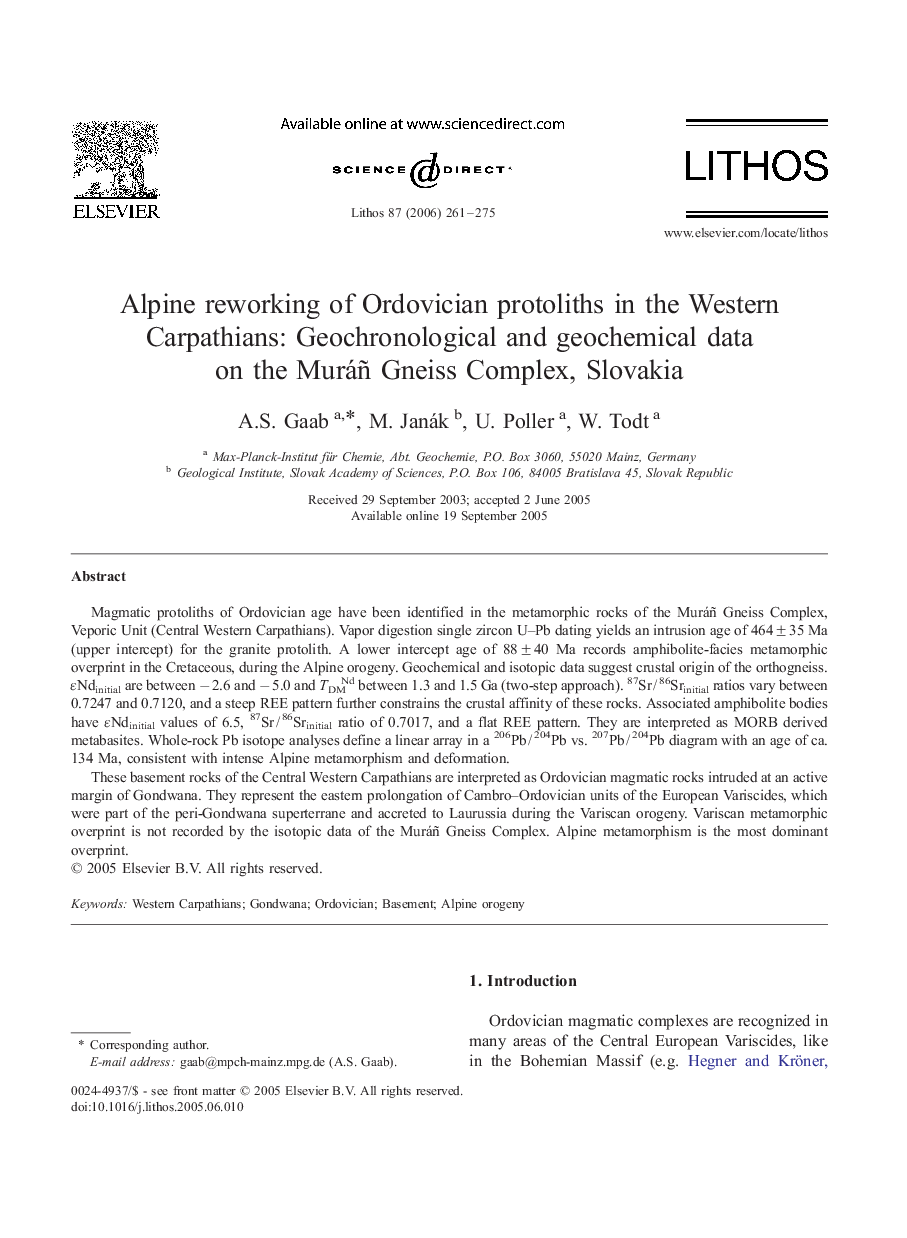| Article ID | Journal | Published Year | Pages | File Type |
|---|---|---|---|---|
| 4718050 | Lithos | 2006 | 15 Pages |
Magmatic protoliths of Ordovician age have been identified in the metamorphic rocks of the Muráñ Gneiss Complex, Veporic Unit (Central Western Carpathians). Vapor digestion single zircon U–Pb dating yields an intrusion age of 464 ± 35 Ma (upper intercept) for the granite protolith. A lower intercept age of 88 ± 40 Ma records amphibolite-facies metamorphic overprint in the Cretaceous, during the Alpine orogeny. Geochemical and isotopic data suggest crustal origin of the orthogneiss. ɛNdinitial are between − 2.6 and − 5.0 and TDMNd between 1.3 and 1.5 Ga (two-step approach). 87Sr / 86Srinitial ratios vary between 0.7247 and 0.7120, and a steep REE pattern further constrains the crustal affinity of these rocks. Associated amphibolite bodies have ɛNdinitial values of 6.5, 87Sr / 86Srinitial ratio of 0.7017, and a flat REE pattern. They are interpreted as MORB derived metabasites. Whole-rock Pb isotope analyses define a linear array in a 206Pb / 204Pb vs. 207Pb / 204Pb diagram with an age of ca. 134 Ma, consistent with intense Alpine metamorphism and deformation.These basement rocks of the Central Western Carpathians are interpreted as Ordovician magmatic rocks intruded at an active margin of Gondwana. They represent the eastern prolongation of Cambro–Ordovician units of the European Variscides, which were part of the peri-Gondwana superterrane and accreted to Laurussia during the Variscan orogeny. Variscan metamorphic overprint is not recorded by the isotopic data of the Muráñ Gneiss Complex. Alpine metamorphism is the most dominant overprint.
